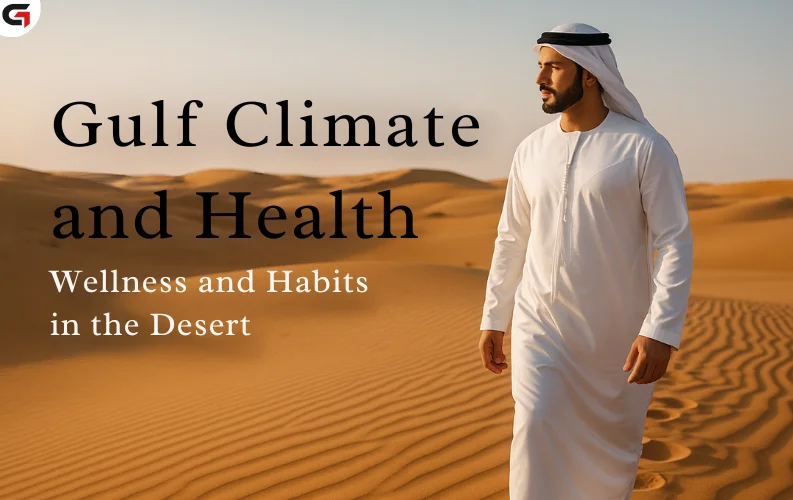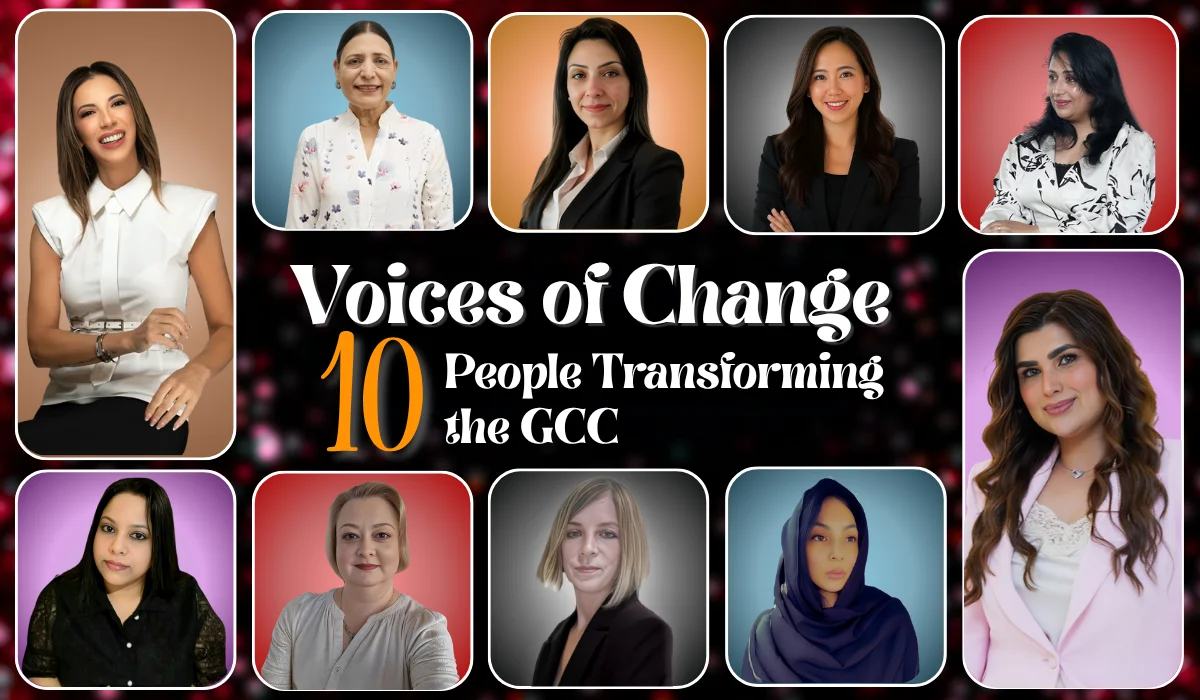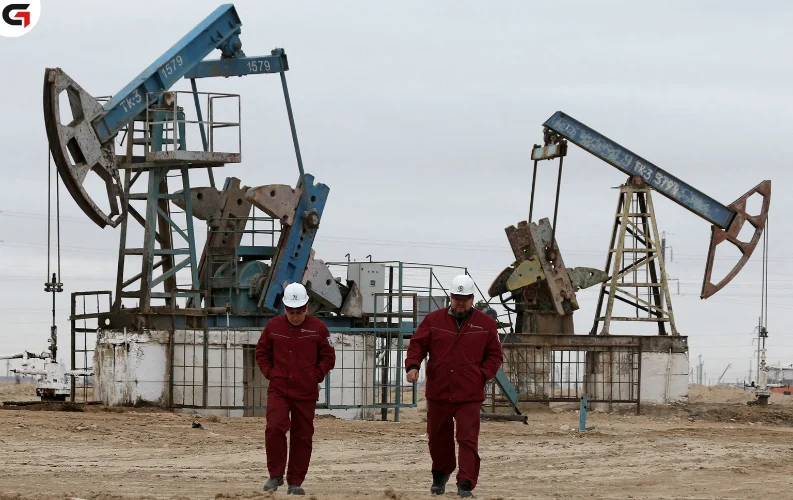Living in the Gulf region means adapting to an environment where heat, humidity, and dust are not occasional visitors, they're part of daily life. Countries like the United Arab Emirates, Saudi Arabia, Qatar, Bahrain, Kuwait, and Oman boast modern cities built in arid or semi-arid landscapes, where temperatures frequently exceed 45°C (113°F) during summer and where sandstorms can blur the skyline within minutes.
This unique environment demands more than just sunscreen and sunglasses. It requires a conscious approach to health, nutrition, hydration, mental well-being, and physical activity. The Gulf climate doesn’t just influence how people dress or commute, it shapes wellness habits in ways that are both subtle and significant.
In this article, we explore how the desert climate of the Gulf impacts health and well-being, and how individuals, families, and communities are adjusting their lifestyles to thrive in it.
Hydration: A Non-Negotiable Necessity
In the Gulf, where the heat index can rise dramatically during the summer months, dehydration is one of the most common, and easily underestimated, health risks.
Key Effects of Dehydration:
-
Fatigue and lack of focus
-
Dry skin and lips
-
Kidney strain and reduced urine output
-
Headaches and dizziness
Residents in the Gulf are encouraged to:
-
Drink water before feeling thirsty
-
Avoid sugary and caffeinated drinks, which dehydrate
-
Eat water-rich foods like cucumber, watermelon, and lettuce
-
Carry a reusable water bottle when commuting or running errands
-
Install indoor humidity meters and air humidifiers during dry months
Even for those indoors most of the day, air conditioning can dry out the skin and airways, requiring conscious hydration and skin care.
Also Read:- Yoga for Stress Relief: Poses for Peace and Calm
Sun Exposure and Skin Health
Sunlight is essential for vitamin D, but too much exposure to harsh desert sunlight can damage the skin, accelerate aging, and increase cancer risks.
Skin Health Challenges in the Gulf:
-
UV index often remains at high or extreme levels for most of the year
-
Skin dryness due to low humidity and air conditioning
-
Common occurrences of sunburns, pigmentation, and photoaging
Protective Habits That Are Common in the Region:
-
Applying broad-spectrum sunscreen daily, even when indoors
-
Wearing loose, light-colored, and UV-protective clothing
-
Using hats, scarves, or abayas as sun shields
-
Scheduling outdoor activities before 9 AM or after 5 PM
Dermatologists in the Gulf report a growing number of patients with skin concerns linked to climate exposure, making year-round protection, not seasonal, a new norm.
Air Quality and Respiratory Health
Dust and sandstorms are part of life in the desert. While they rarely halt everyday life in the Gulf, their impact on respiratory health can be serious, especially for those with asthma, allergies, or chronic respiratory conditions.
Common Triggers in Gulf Air:
-
Fine dust particles (PM10 and PM2.5)
-
Construction pollution
-
Seasonal sandstorms
-
Indoor mold from excessive air conditioning
Coping Strategies in Urban Households:
-
Installing air purifiers with HEPA filters at home
-
Wearing masks during sandstorms or high-dust days
-
Using nasal sprays and steam inhalation for congestion
-
Getting regular indoor HVAC maintenance
Governments in the region, especially in Dubai and Doha, are actively investing in air quality monitoring systems and public awareness campaigns, especially during the dusty spring and early summer seasons.
Also Like This:- Omega-3 Fatty Acids from Fish Oil: A Comprehensive Health and Nutritional Guide
Fitness and Physical Activity in a Desert Environment
With the scorching sun bearing down, outdoor physical activity in the Gulf can pose risks such as heatstroke, dehydration, and fatigue. But rather than reducing activity, residents are adjusting how and when they move.
Desert-Inspired Fitness Habits:
-
Early morning or post-sunset walking and jogging routines
-
Indoor gyms, mall walks, and climate-controlled sports complexes
-
Aqua aerobics and swimming in indoor pools
-
Home workouts with yoga, stretching, and resistance training
-
Mobile fitness apps tailored for quick workouts and hydration alerts
Cities like Abu Dhabi, Riyadh, and Manama have created air-conditioned running tracks, fitness events in malls, and outdoor parks with shaded pathways. The Dubai Fitness Challenge is one example of a government-led effort to make exercise more accessible, even in the heat.
Mental Wellness: The Hidden Challenge of Desert Living
The psychological effects of extreme climates are often overlooked. Prolonged exposure to closed indoor environments, high temperatures, and reduced time outdoors can lead to mood fluctuations, low energy, and even symptoms of seasonal affective disorder (SAD).
Psychological Patterns Observed in Desert Life:
-
Increased screen time and sedentary habits
-
Disrupted sleep cycles due to harsh daylight or late-night indoor activity
-
Reduced social interaction during peak heat hours
-
General fatigue or irritability during extended heatwaves
Mental Health Tips for Gulf Residents:
-
Use natural daylight indoors as much as possible
-
Practice mindfulness or meditation to reduce climate-related stress
-
Build a morning or evening routine that includes movement and nature
-
Connect socially, whether virtually or in cool, shared spaces
-
Seek professional counseling when stress or burnout becomes chronic
Regional platforms and clinics, such as Shezlong (MENA’s online therapy platform) and government-led mental health hotlines, are making emotional support more accessible in Gulf cities than ever before.
Diet and Nutrition: Adapting Food Choices to Heat
Eating heavy or greasy foods in hot weather can slow down digestion, reduce energy, and contribute to health issues like acid reflux and obesity, a growing concern in Gulf countries.
Smart Eating Strategies for Desert Living:
-
Focus on light, cooling meals: salads, yogurt, grilled meats
-
Reduce spicy, oily, or fried foods during summer
-
Eat smaller portions more frequently throughout the day
-
Increase natural probiotics to support gut health under AC-heavy environments
-
Emphasize seasonal fruits and hydration-rich vegetables
In recent years, a growing number of health-focused cafes and meal plans in cities like Dubai, Doha, and Jeddah are catering to residents who seek climate-conscious diets. These places emphasize functional foods, portion control, and heat-supportive ingredients like mint, lemon, cucumber, and barley.
Explore More:- Top 10 Home Workouts to Stay Fit Without a Gym
Cultural Habits Supporting Wellness
The Gulf's culture itself offers many built-in health-conscious practices:
-
Afternoon rest (Qailulah): Midday rest is traditionally practiced and supports cardiovascular and mental health in hot climates.
-
Dates and herbal teas: Staple ingredients with high nutrient value, often consumed with mindfulness.
-
Social gatherings: Despite the heat, Gulf societies prioritize community bonding, which strengthens emotional health.
These traditions, when combined with modern science, offer a blended wellness approach that is both deeply cultural and medically sound.
Conclusion: Thriving, Not Just Surviving in the Gulf
Health in the Gulf isn’t about fighting the desert, it’s about understanding it. The extreme climate shapes daily decisions, from what people drink and how they move, to how they rest and how they care for their minds. But this doesn’t limit life, it refines it.
Residents are learning to live with intention, prioritizing hydration, mental peace, skin care, and active living, even when the mercury rises. In doing so, the Gulf is crafting its own model of desert wellness, one that respects its roots while embracing innovation.
This isn’t just about adjusting to heat. It’s about redefining what healthy living means when the sun is always shining.
You may also like:-























